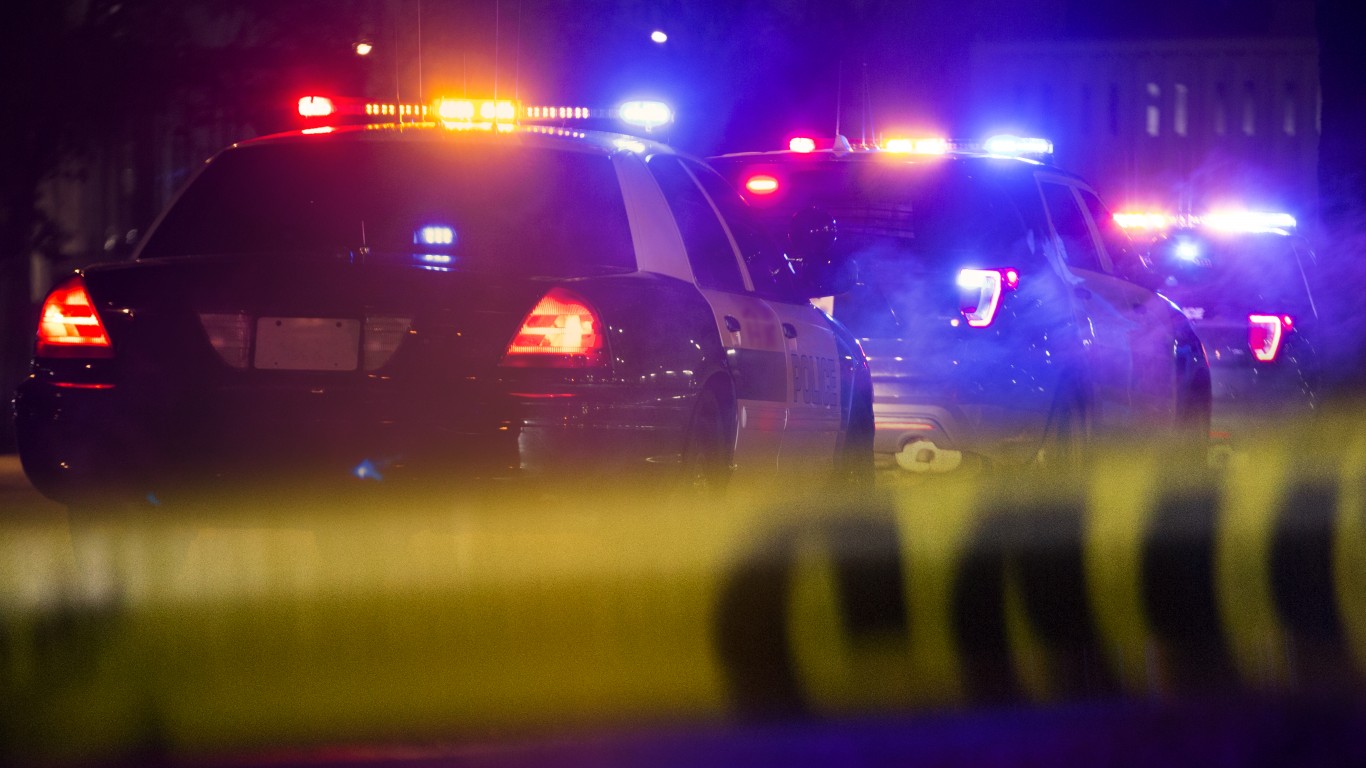

Cities across the United States have been reporting a spike in gun violence and homicide during the COVID-19 pandemic. In the first six months of 2020, there was a nearly 15% increase in murders nationwide, and across a sample of 59 cities tracked by the FBI, the number of murders was up 28% from January through July compared to the same period in 2019, according to The New York Times.
The increase reflects a sudden reversal of a longer-term trend, as violent crime has fallen in the U.S. for four consecutive years. There were 367 violent crimes reported for every 100,000 people in the United States in 2019, a low not seen since 2014 and a far cry from the highs of the early 1990s, when rates topped 750 violent crimes per 100,000 people annually.
Violent crime is a broad category of offenses comprising four sub categories: murder, robbery, rape, and aggravated assault. In San Luis Obispo, California, violent crime is slightly more common than it is nationwide. In 2019, the most recent year of available data, there were a total of 192 violent crimes reported in the city — or 402 for every 100,000 people. Click here to see the full crime report for San Luis Obispo.
The FBI tracked violent crime in 4,548 U.S. cities with populations of at least 5,000 in 2019, and 98% of those cities reported at least one violent crime that year. Of the 4,473 cities to report one or more incidents of violence, San Luis Obispo ranks No. 1,006 by violent crime rate, which ranks it in the top 25% most violent U.S. cities.
Just as violent crime is more common in San Luis Obispo than it is nationwide, violent crime is also more common in California than it is nationwide. There were a total of 174,331 violent crimes reported in California in 2019, or 441 for every 100,000 people. Of all 50 states, California has the 12th highest violent crime rate.
The violent crime rate in San Luis Obispo ranks as No. 121 of the 414 cities in California that are home to at least 5,000 people for which the FBI has data.
Across the United States, aggravated assault is the most common form of violent crime. Of the 1.2 million violent crimes committed in the U.S. in 2019, about 66% were incidents of aggravated assault. In San Luis Obispo, aggravated assault accounted for 59% of all reported violent crimes in 2019.
Of the four types of violent crime, murder ranks the highest on the FBI’s hierarchy of crime severity. San Luis Obispo, a city of about 47,700 residents, is one of 2,956 U.S. cities reviewed to report no murders in 2019. The national murder rate stands at five incidents for every 100,000 people.
The relationship between economic distress and crime in a given area is not direct. However, lower-income areas often report higher than average crime rates. There are exceptions to this pattern however, and though the violent crime rate is higher than the national average in San Luis Obispo, the poverty rate is not. An estimated 14.3% of San Luis Obispo residents live below the poverty line, closely in line with the 14.1% U.S. poverty rate.
Violent offenses are just one component of crime in an area. To provide a more comprehensive view of overall crime levels across the country, 24/7 Wall St. recently published extensive crime reports with data visualizations for over 4,000 cities and all 50 states. Click here to see the complete crime report for San Luis Obispo here.
Take This Retirement Quiz To Get Matched With An Advisor Now (Sponsored)
Are you ready for retirement? Planning for retirement can be overwhelming, that’s why it could be a good idea to speak to a fiduciary financial advisor about your goals today.
Start by taking this retirement quiz right here from SmartAsset that will match you with up to 3 financial advisors that serve your area and beyond in 5 minutes. Smart Asset is now matching over 50,000 people a month.
Click here now to get started.
Thank you for reading! Have some feedback for us?
Contact the 24/7 Wall St. editorial team.